Companies will need to control 3D printing processes and counterfeiting risks more closely
The civil aviation sector is already a huge trendsetter in the adoption of additive manufacturing (3D printing), contributing 12% to the industry’s global revenue in 2013, and all indications are that this will continue to grow.
Several reports and real user cases have proven that there is quantifiable ROI to achieve from 3D printing by reducing material costs, decreasing labor content, and increasing availability of parts at point of use all having a dramatic impact on the supply chain.
The 3D printing breakthrough is a fact and is not news anymore. However, the rapid adoption of the technology has had consequences that companies need to consider. Lack of control of the production processes and supply chain is one of them: as production facilities grow, 3D printed parts become widely distributed geographically and items are manufactured to a larger extent on an on-demand basis, as ‘exceptions’ that must be managed and monitored. We also see the trend of increased counterfeiting of components using 3D printing. Gartner projects that counterfeit trademarked goods in 2018 to be at the US$100 billion per year mark, and that could be a conservative estimate. The hardware needed is easily acquired and is priced at only US$500 for a basic printer system the materials for making counterfeit items are readily available, making it possible for counterfeiters to get started at a minimal investment.
Combating counterfeiting
So what can companies do to address this? There are some measures that can be taken, trademarking and patents being key tools:
Trademark is the term that identifies one’s brand an example of trademark infringement would be using a brand name on a counterfeit item. Manufacturers can use differentiating technology to ensure components are highly visible. Quantum dots for instance tiny nanocrystals made from semiconductor material can be embedded into the authentic item, distinguishing real components from counterfeit.
The patent is the actual functionality of an item or a process an example of patent infringement would be the manufacturing of a component or use of a process that is exclusive to that company. Patenting the right parts and processes quickly will be key, both to beat the competition and to stop the counterfeiters.
While 3D printing is rightly being welcomed in civil aviation, it will also require key changes in ERP systems to control every element of the manufacturing, maintenance and support chain processes to manage the possibility of counterfeit parts entering the support chain. ERP solutions, such as IFS Applications, can support configuration management to manage the security and compliance risks in an industry as heavily regulated as aerospace, where safety is paramount.
Companies must take a close look at what tools and technologies are needed to better manage the supply chain increasing control and also monitoring counterfeiting risks to take the right actions to stop them in time.
New applications of technologies will emerge to make an organization’s skill set remotely available
Research and input from our customers shows that there is often a shortage of qualified maintenance engineers that can act quickly as the need arises at various locations around the world. Civil aviation organizations will have to look at how technologies can help engineers be more productive and how their skills can be ‘augmented’, for use in locations where they are not physically present.
One challenge the aviation industry continuously struggles with is how to reduce aircraft turn-around times on the ground. This is one area where there is a lack of qualified engineers to carry out the appropriate maintenance as quickly as possible before getting the aircraft up in the air again.
New technology, like wearable devices, can help address that with ‘expertise on demand’ provided remotely. One example is Japan Airlines, which has trialled Google Glass in the maintenance process. The glasses are worn by engineers working around the aircraft on the tarmac. Images of the aircraft are sent to maintenance specialists for assessment, feeding any issues they see back to the engineer on the ground who can then carry out the work promptly, resulting in quicker turnaround times. Google Glass may have needed some rethinking for the consumer market, but wearable technology offers substantial business potential.
Another example is EasyJet, which equipped its engineers’ uniforms with wearable tech to make them more effective. LEDs were fitted in jacket hoods to illuminate work areas and leave both hands free for aircraft inspections and maintenance. In-built video cameras on uniforms allow remote diagnosis of technical issues along with surround sound and a microphone for instant communication.
IFS is working with XM Reality to bring forward a remote expert to assist in complex maintenance to broaden the capabilities of maintenance engineers on the ground ‘augmenting’ flight-line workers’ skills. IFS believes that adding cognitive applications and voice-controlled intelligent agents, similar to Siri, to wearable devices would further augment such workers’ skills, helping them identify and act on speci?c problems with more autonomy.
Air quality sensor and barometer features help engineers monitor their work environment and create a map of air quality in different cities for passenger information.
We are now also seeing civil aviation organizations exploring the use of drones for maintenance. Drone technology can be used for damage inspection, scheduled maintenance, spare parts delivery or automating detection or defects.
The common factor here between drones and wearable technology is that there doesn’t have to be a human engineer on-site to manage maintenance it can be taken care of by using new technology.
Civil aviation organizations can achieve realizable benefits by integrating these emerging technologies into their business and maintenance processes, which can only be achieved with an agile software infrastructure in place that can adapt to new business processes.
Graham Grose is industry director at the IFS Aerospace & Defence Centre of Excellence




